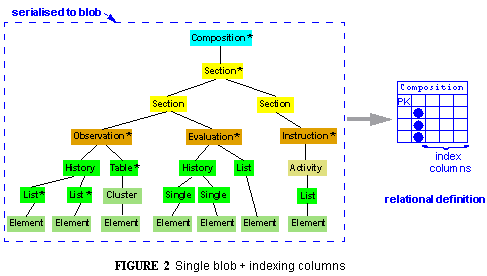...
In its simplest form, the serilialisation-into-blobs approach is used to serialise entire top-level information objects into single blobs and store them, a trivial exercise even with a normal relational database - requiring only one column. To provide some query ability, a number of other "indexing" columns are created for attribute values within the blobs which might typically be queried (based on indexes created on the remaining columns). A typical table using this approach might have less than 10 columns and be highly performant. However, there are two drawbacks. One is that the design is not very flexible. If a query needs access to a value not included in one of the special columns, the entire object blob has to be retrieved and deserialised - just to determine if it is in the candidate set for the query. Secondly, adding to or changing which attributes are queryable means changing the table design, and migrating the data.
Nevertheless, this approach has been used in many products quite successfully. It is most suitable when the storage medium is a relational database and the types of queries are mostly known in advance. The following figure illustrates the approach.
Hybrid Serialisation
...
